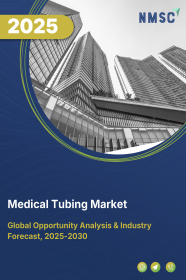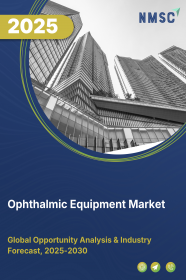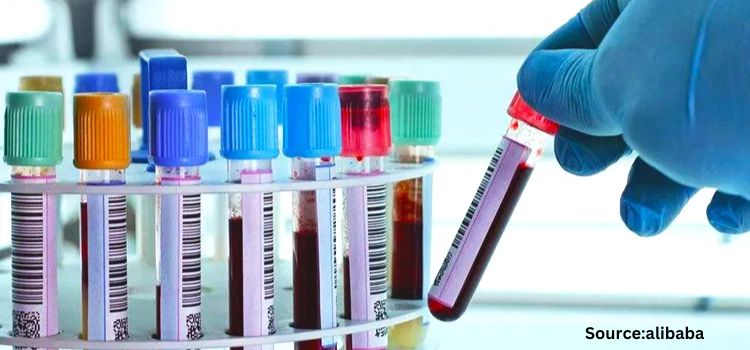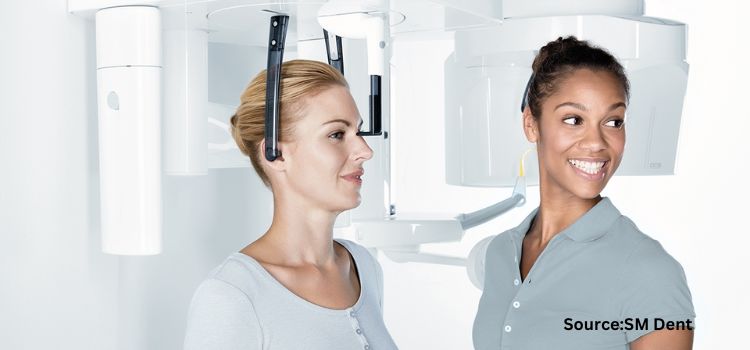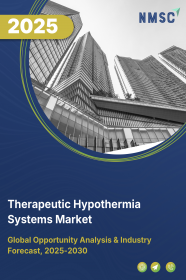
Therapeutic Hypothermia Systems Market by Product Type (Cooling Devices, Cooling Catheters, Cooling Packs, Water Blankets, Cool Caps, And Others), by Application (Neurology, Cardiology, Neonatal Care, and Others) and by End Users (Hospitals, Ambulatory Surgical Centers, and Others)–Global Opportunity Analysis and Industry Forecast 2025-2030
US Tariff Impact on Therapeutic Hypothermia Systems Market
Trump Tariffs Are Reshaping Global Business
Therapeutic Hypothermia Systems Market Overview
The global Therapeutic Hypothermia Systems Market size was valued at USD 305.3 million in 2024 and is predicted to reach USD 322.3 million by the end of 2025. The industry is predicted to reach USD 422.9 million by 2030 with a CAGR of 5.6% from 2025 to 2030.
The therapeutic hypothermia systems market is witnessing significant growth, driven by the rising incidence of cardiac arrest and stroke, as well as advancements in cooling technologies. These systems, particularly effective in improving neurological outcomes after cardiac arrest and stroke, are becoming integral in emergency medical care. Technological innovations such as intranasal cooling devices are enhancing treatment precision while improving patient comfort. Increased awareness of therapeutic hypothermia's benefits, supported by clinical research and educational campaigns, is further accelerating adoption among healthcare providers. However, the fragmented regulatory landscape presents challenges, with varied approval protocols across regions. Despite these hurdles, the integration of AI enhances healthcare solutions in emerging markets, creating opportunities for market expansion.
Rising Incidence of Cardiac Arrest and Stroke Drive Market Growth
Cardiovascular diseases continue to be a major cause of death worldwide, with the American Heart Association reporting about 356,000 out-of-hospital cardiac arrests annually in the U.S. alone. Therapeutic hypothermia has proven effective in enhancing neurological outcomes for patients following cardiac arrest, establishing it as an essential part of post-resuscitation care. By lowering the body’s temperature, it helps reduce brain injury and improve the chances of recovery, making it a critical treatment in emergency medical care.
Technological Advancements in Cooling Devices Fuel Market Growth
Recent innovations in technology have resulted in the creation of hypothermia systems that are both more efficient and easier to use. For instance, the development of intranasal cooling devices enables faster temperature reduction while being minimally invasive. This not only improves patient comfort but also increases treatment precision and efficiency, making these systems more practical for emergency and critical care settings.
Growing Awareness of Therapeutic Benefits Drives Market Growth
Clinical research and targeted educational campaigns have significantly boosted awareness around the use of therapeutic hypothermia, especially for conditions such as cardiac arrest and neonatal encephalopathy. These initiatives have helped healthcare professionals understand the clinical benefits, protocols, and outcomes associated with hypothermia systems. As a result, more hospitals and emergency care units are integrating these systems into their critical care strategies, contributing to higher adoption rates and improved patient outcomes across various regions.
Regulatory Hurdles Hinder Market Growth
The regulatory landscape for medical devices remains a critical barrier to streamlined global expansion. Each region enforces distinct approval protocols, requiring manufacturers to navigate a complex web of compliance requirements. This regulatory fragmentation often results in extended timelines for product approval, driving up development and administrative costs. Moreover, delays in market entry can hinder early revenue generation and weaken competitive positioning, especially in high-potential regions. For companies in the therapeutic hypothermia systems market, aligning products with varied international standards remains a strategic challenge that directly impacts operational efficiency and market penetration.
Integration of AI Enhances Healthcare Solutions in Emerging Markets Creates Opportunity for Market Expansion
The integration of artificial intelligence (AI) into therapeutic hypothermia systems is revolutionizing healthcare solutions, creating significant opportunities for market growth by enhancing efficiency, precision, and accessibility. AI-driven innovations enable real-time monitoring, predictive analytics, and automated temperature regulation, improving outcomes for conditions like Hypoxic Ischemic Encephalopathy (HIE) in neonates. For example, the "REVIVE" system launched in India exemplifies this shift. It integrates AI-driven brain activity monitoring and automated cooling, offering a more efficient and accessible solution for treating HIE in neonates. This integration of AI into the healthcare system supports the growing demand for advanced yet affordable medical solutions in emerging markets. Additionally, AI’s ability to optimize treatment protocols and reduce operational costs aligns with the global push for personalized and scalable healthcare, driving further adoption and market expansion.
Market Segmentation and Scope of the Study
The therapeutic hypothermia systems market report is segmented on the basis of product type, application, end user, and region. On the basis of product type, the market is categorized into cooling devices, cooling catheters, cooling packs, water blankets, cool caps, and others. On the basis of application, the market is segmented into neurology, cardiology, neonatal care, and others. On the basis of end user, the market is segmented into hospitals, ambulatory surgical centers, and others. Regional breakdown and analysis of each of the aforesaid segments include regions comprising North America, Europe, Asia-Pacific, and RoW.
Geographical Analysis
North America continues to lead the global therapeutic hypothermia systems industry, driven by advancements in healthcare infrastructure, increasing awareness, and significant investments in medical research. The U.S. and Canada are at the forefront of clinical studies and innovations in cooling technologies. Healthcare providers in the region increasingly adopt therapeutic hypothermia as a critical component of post-cardiac arrest care. Additionally, the region’s strong regulatory framework ensures that these technologies meet high safety standards, fostering confidence in both healthcare providers and patients. With a high demand for advanced medical devices and a well-established healthcare system, North America holds a significant share of the market, poised for continued growth.
In Europe, the therapeutic hypothermia systems sector is growing steadily due to robust healthcare policies, increased government spending on medical technologies, and a rising emphasis on patient-centric care. The European market is characterized by strong regulatory frameworks that support the adoption of innovative medical devices, ensuring patient safety while accelerating product approval. Notably, several European countries have integrated therapeutic hypothermia into their standard post-resuscitation care protocols, fostering its adoption in emergency departments and critical care settings. Furthermore, the rise of healthcare collaborations and research initiatives across Europe is accelerating market growth, particularly in countries like Germany, the U.K., and France, where hospital infrastructure and the need for advanced treatment options are expanding.
The Asia-Pacific region presents significant growth potential for the therapeutic hypothermia systems market. As countries like China, India, and Japan invest heavily in healthcare infrastructure, there is an increasing demand for advanced treatment options, including therapeutic hypothermia. The adoption of these systems is particularly high in urban centers, where access to quality healthcare is improving. Additionally, several Asian countries are making strides in the development of cost-effective solutions tailored to the needs of emerging markets. This includes innovations like intranasal cooling devices and portable hypothermia systems, which are improving accessibility in remote and underserved areas. With the ongoing expansion of healthcare facilities and rising awareness about post-cardiac arrest care, the Asia-Pacific region is becoming a key player in the global market.
In regions outside North America, Europe, and Asia-Pacific, the is gradually expanding, particularly in Latin America, the Middle East, and parts of Africa. While healthcare infrastructure in these regions is still developing, the demand for life-saving technologies like therapeutic hypothermia is growing. Countries in Latin America and the Middle East are increasingly integrating these systems into emergency care protocols, especially in countries like Brazil, Mexico, and Saudi Arabia. Furthermore, as governments and healthcare organizations focus on improving the quality of healthcare, the adoption of hypothermia systems is expected to rise. The introduction of affordable and user-friendly cooling systems tailored to these markets will drive market growth, enhancing patient care in previously underserved areas.
Strategic Actions by Key Players in Therapeutic Hypothermia Systems
Key players in the global therapeutic hypothermia systems industry are adopting innovative strategies to expand their market presence and enhance the effectiveness of their offerings. Companies are focusing on product innovations, such as the development of more efficient, user-friendly, and minimally invasive cooling devices. For instance, the launch of intranasal cooling systems and portable cooling technologies reflects the industry's shift toward creating cost-effective and accessible solutions for both developed and emerging markets. Leading players like Benechill and Medtronic are also exploring partnerships with healthcare institutions and research organizations to accelerate product development and clinical adoption. These collaborations help address challenges related to clinical validation, product integration, and market penetration.
However, the industry still faces several challenges, such as stringent regulatory requirements and the high costs associated with research and development. The complex approval processes in key markets like the U.S. and Europe can delay product launches, impacting time-to-market. Furthermore, despite growing awareness of therapeutic hypothermia’s benefits, there is still a need for broader adoption, particularly in regions with limited healthcare infrastructure. Opportunities lie in addressing these barriers through strategic partnerships, especially in emerging economies where healthcare infrastructure investments are on the rise. Tailoring solutions to the specific needs of these markets can further boost adoption rates. Additionally, as the market for neonatal hypothermia systems expands, companies have the chance to cater to this niche segment with advanced, targeted therapies. As regulatory standards evolve and more clinical evidence emerges, the therapeutic hypothermia systems market is well-positioned for continued growth, offering a promising future for industry players.
Key Benefits
-
The report provides quantitative analysis and estimations of the therapeutic hypothermia systems market from 2025 to 2030, which assists in identifying the prevailing market opportunities.
-
The study comprises a deep dive analysis of the therapeutic hypothermia systems market including the current and future trends to depict prevalent investment pockets in the market.
-
Information related to key drivers, restraints, and opportunities and their impact on the therapeutic hypothermia systems market is provided in the report.
-
Competitive analysis of the players, along with their market share is provided in the report.
-
SWOT analysis and Porters Five Forces model is elaborated in the study.
-
Value chain analysis in the market study provides a clear picture of roles of stakeholders.
Therapeutic Hypothermia Systems Market Key Segments
By Product Type
-
Cooling Devices
-
Cooling Catheters
-
Cooling Packs
-
Water Blankets
-
Cool Caps
-
Other
By Application
-
Neurology
-
Cardiology
-
Neonatal Care
-
Others
By End Users
-
Hospitals
-
Ambulatory Surgical Centers
-
Others
By Region
-
North America
-
The U.S.
-
Canada
-
Mexico
-
-
Europe
-
The UK
-
Germany
-
France
-
Italy
-
Spain
-
Denmark
-
Netherlands
-
Finland
-
Sweden
-
Norway
-
Russia
-
Rest of Europe
-
-
Asia Pacific
-
China
-
Japan
-
India
-
South Korea
-
Australia
-
Indonesia
-
Singapore
-
Taiwan
-
Thailand
-
Rest of Asia Pacific
-
-
RoW
-
Latin America
-
Middle East
-
Africa
-
Key Players
-
ZOLL Medical Corporation
-
Becton, Dickinson and Company
-
Stryker Corporation
-
Gentherm Medical
-
Brain Cool AB
-
Belmont Medical Technologies
-
Sourcemark Medical
-
Life Recovery Systems
-
PFM Medical Hico GmbH
-
EM-MED Ltd.
-
Sre Corporation
-
Breezair Technology
-
Bala Industries
-
Ashish Air
-
Suvidha Air Engineers
REPORT SCOPE AND SEGMENTATION:
|
Parameters |
Details |
|
Market Size in 2024 |
USD 305.3 million |
|
Revenue Forecast in 2030 |
USD 422.9 million |
|
Growth Rate |
CAGR of 5.6% from 2025 to 2030 |
|
Analysis Period |
2024–2030 |
|
Base Year Considered |
2024 |
|
Forecast Period |
2025–2030 |
|
Market Size Estimation |
Million (USD) |
|
Growth Factors |
|
|
Countries Covered |
28 |
|
Companies Profiled |
15 |
|
Market Share |
Available for 10 companies |
|
Customization Scope |
Free customization (equivalent up to 80 working hours of analysts) after purchase. Addition or alteration to country, regional, and segment scope. |
|
Pricing and Purchase Options |
Avail customized purchase options to meet your exact research needs. |

















 Speak to Our Analyst
Speak to Our Analyst



